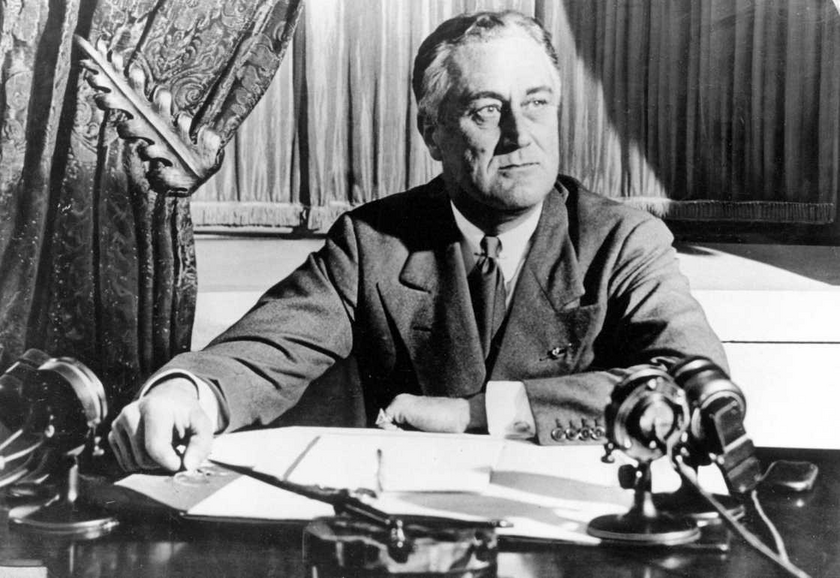White Paper Series Title: "Reviving America: A Supply-Side Blueprint for Economic Freedom"
Part 1:
The Great Depression Revisited: How Government Intervention Created a Crisis and How Supply-Side Economics Could Have Prevented It
Author: the Conservative TAKE contributor
Date: April 9, 2025
Prepared for: Advocates of Free Markets, Fiscal Sanity, and American Prosperity
Executive Summary
This paper challenges the mainstream narrative that the Smoot-Hawley Tariff was the primary cause of the Great Depression. While tariffs worsened global trade conditions, they weren’t the root cause of the Great Depression. The real problem was timing, imposing high tariffs during a fragile economic downturn was bad policy. Not because tariffs are inherently harmful, but because they were stacked on top of monetary collapse and collapsing confidence. In a stronger economy, they might’ve been manageable. But in 1930, they added fuel to a fire already lit by the Federal Reserve and government overreach.
The evidence shows that monetary mismanagement by the Federal Reserve, destructive tax and regulatory policy, and massive expansion of government intervention, particularly through FDR’s New Deal, were the primary drivers of the Depression’s depth and duration.
From a supply-side economics perspective, the Depression was a predictable outcome of bad policy, not a failure of capitalism. This paper draws on the work of Milton Friedman, Anna Schwartz, Robert Higgs, and others to show how America could have avoided the Depression altogether if it had stayed true to limited government, sound money, and free markets.
I. The Real Causes of the Great Depression
A. Federal Reserve’s Catastrophic Monetary Policy (1929–1933)
According to Milton Friedman and Anna Schwartz in A Monetary History of the United States (1963), the Federal Reserve contracted the money supply by nearly one-third from 1929 to 1933. This was not a market failure; it was government incompetence.
The Fed raised interest rates in 1928–29 to curb stock speculation—too tight, too fast.
After the crash, it failed to act as a lender of last resort, letting thousands of banks collapse.
The result was a deflationary spiral—prices fell, wages fell, debts became unpayable.
Quote from Friedman:
“The Depression was the consequence of a monetary contraction by the Federal Reserve System that started in 1929 and continued until early 1933.”
This destruction of liquidity dried up investment and demand not because people stopped spending, but because the Fed sucked money out of the economy.
B. The Smoot-Hawley Tariff: Scapegoat, Not Catalyst
The Smoot-Hawley Tariff Act (1930) raised tariffs on over 20,000 imported goods. Keynesians and leftists love to blame it, but the data and historical timeline show it was not the trigger.
Facts:
Stock Market Crash (October 1929) happened before Smoot-Hawley passed.
International trade was only about 7% of U.S. GDP—not enough to collapse the economy.
Yes, retaliatory tariffs hurt exports, but domestic spending and employment were already falling before the tariff was enforced.
The Depression worsened after massive monetary contraction, not immediately after tariffs.
Sources:
Barry Eichengreen, Golden Fetters (1992) – notes that countries that stayed on the gold standard suffered worse declines than those that devalued.
Douglas Irwin, Peddling Protectionism (2011) – shows Smoot-Hawley had limited macroeconomic impact compared to monetary and fiscal errors.
Conclusion: Tariffs were poorly timed policy during an already fragile economic moment—not because tariffs are inherently bad, but because they added pressure when the real crisis was being driven by monetary collapse and federal mismanagement. In a healthier context, strategic tariffs can protect national interests, but in 1930, they were gasoline on a fire lit by the Federal Reserve and big-government overreach.
C. Fiscal Folly: Hoover and Roosevelt Raised Taxes
Both Herbert Hoover and Franklin Roosevelt increased taxes during a depression, which killed recovery.
Revenue Act of 1932 (Hoover): Raised top income tax from 25% to 63%
Revenue Acts of 1935, 1936, and 1937 (FDR): Introduced wealth taxes, corporate taxes, dividend taxes
This drained private capital from the economy, reducing business investment and job creation.
Source: Alvin Hansen, Fiscal Policy and Business Cycles (1941) – admits New Deal taxes slowed recovery.
D. FDR’s New Deal: Central Planning, Not Recovery
FDR’s New Deal was not stimulus. It was economic micromanagement. It introduced policies that froze markets, punished producers, and rewarded political allies.
Key Failures:
National Industrial Recovery Act (NIRA, 1933)
Created cartels, set wages and prices by government decree
Crushed competition and was ruled unconstitutional in Schechter Poultry Corp. v. U.S. (1935)
Agricultural Adjustment Act (AAA)
Paid farmers to destroy crops and livestock to raise prices
Starved the poor and created artificial scarcity
Wagner Act (1935)
Empowered unions to demand higher wages, reducing employment
Small businesses couldn’t afford the mandates
Public Works and Relief Programs
Created temporary jobs with no lasting value
Replaced private enterprise with government dependency
Robert Higgs in Crisis and Leviathan (1987) called this “regime uncertainty”—businesses froze hiring and investment because they feared more regulation, taxes, or seizures.
E. Empirical Evidence: The Recovery That Never Came
Unemployment never fell below 14% during the entire 1930s.
Private investment did not return to pre-1929 levels until after World War II.
GDP growth was artificially propped up by government spending, not private production.
FDR’s own Treasury Secretary, Henry Morgenthau, testified before Congress in 1939:
“We have tried spending money. We are spending more than we have ever spent before and it does not work... we have just as much unemployment... and an enormous debt to boot.”
II. How Supply-Side Economics Would Have Prevented It
A. Maintain a Stable Money Supply
Friedman’s rule: Keep monetary growth predictable and moderate.
No deflationary spiral, no bank panics, no wipeout of savings.
B. Cut Taxes to Encourage Production
Reward work, savings, and investment.
Let entrepreneurs rebuild without fear of confiscation.
C. No Price Controls, No Central Planning
Prices are signals. Government has no business setting them.
Let markets clear. Let competition allocate resources efficiently.
D. Poorly Timed Tariffs, Not the Idea of Tariffs Themselves
The economy was already collapsing due to deflation, falling demand, and tight Federal Reserve policy.
Tariffs added fuel to the fire by straining international trade right when global cooperation was needed most.
The Federal Reserve failed to respond, allowing monetary contraction and bank failures to continue unchecked.
Tariffs in a strong economy can protect key industries, but in a fragile economy, they can deepen a crisis.
Instead of protecting markets, Smoot-Hawley isolated them, damaging U.S. exports and worsening the downturn.
III. In the end... Freedom, Not Central Planning, Leads to Recovery
The Great Depression was not a failure of capitalism. It was a failure of interventionism. The Federal Reserve choked the money supply. Politicians raised taxes and stifled business. And FDR’s New Deal created a decade of stagnation, not salvation.
Had America followed the supply-side blueprint—low taxes, stable money, and limited government—the Depression would have been a short, sharp correction, not a prolonged disaster.
Key Sources
Friedman, Milton & Schwartz, Anna J. A Monetary History of the United States, 1867–1960 (Princeton University Press, 1963)
Higgs, Robert. Crisis and Leviathan (Oxford University Press, 1987)
Irwin, Douglas A. Peddling Protectionism: Smoot-Hawley and the Great Depression (Princeton University Press, 2011)
Powell, Jim. FDR’s Folly: How Roosevelt and His New Deal Prolonged the Great Depression (Crown Forum, 2003)
Rothbard, Murray N. America’s Great Depression (Ludwig von Mises Institute, 2000 edition)
Eichengreen, Barry. Golden Fetters (Oxford University Press, 1992)
Morgenthau Diaries and Congressional Testimony (1939)

In Part 2, tommorrow, we show how Reagan reversed 1970s stagnation with bold tax cuts, deregulation, and pro-growth policies, proving the power of supply-side economics in real time.













